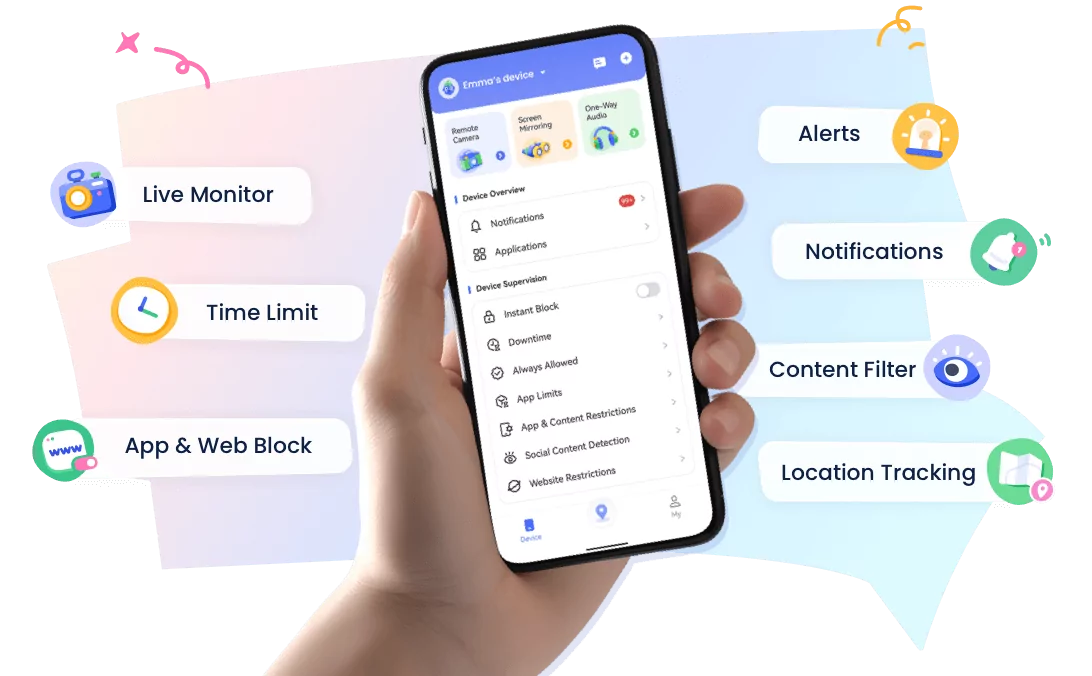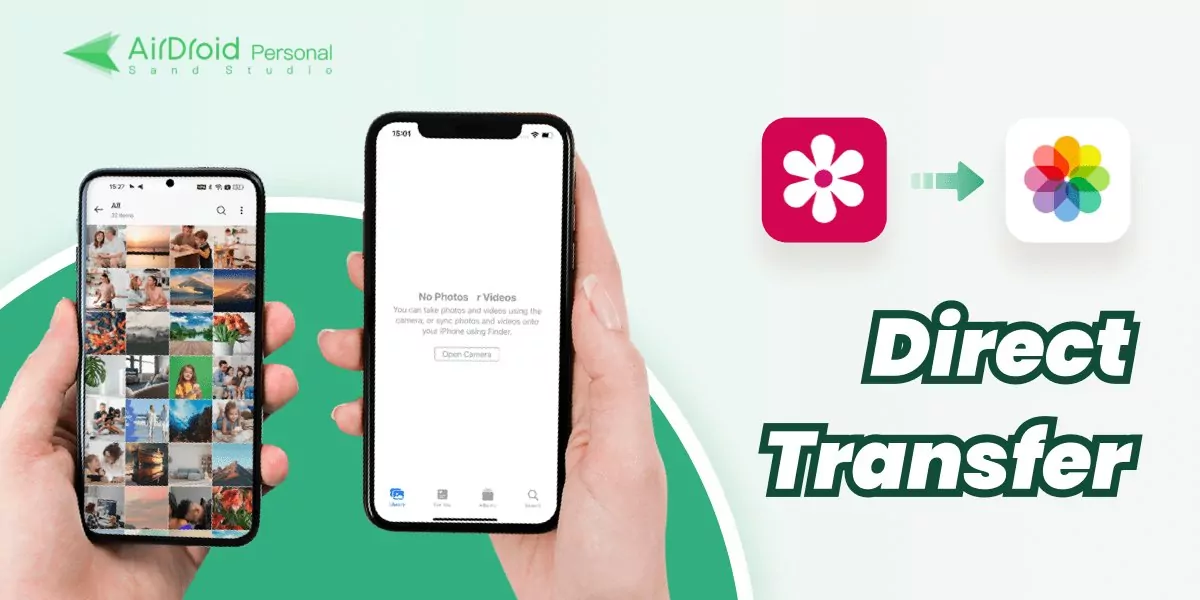Google SafeSearch Locked? Here's What to Do!
If you're frustrated because Google SafeSearch won’t turn off, you’re not alone! Many users struggle with SafeSearch locked by an administrator or parental controls that won’t let them remove SafeSearch restrictions. But don’t worry—I’ll walk you through the reasons why this happens and how to fix it.
Why Is Google SafeSearch Locked?
Before we explore why you might be unable to unlock Google SafeSearch settings, first understand how SafeSearch can be forced.
1. Your Google Account Settings Are Enforcing SafeSearch
Google automatically turns on SafeSearch for users under 18. If your account’s age is set below this limit, SafeSearch will remain locked until the age is updated. If you mistakenly set your age under 18, update it in your Google account settings. However, in some regions, even minors can unlock SafeSearch manually.
Additionally, if your account is under parental supervision (e.g., through Google Family Link), only a parent or guardian can turn off SafeSearch on Chrome.
2. Your School or Work Administrator Has Locked SafeSearch
If you’re using a school, work, or public Wi-Fi network, the administrator may have enforced Google SafeSearch restrictions. This means only they can disable it. Hence, try switching to a personal network, such as your mobile data, to see if SafeSearch turns off. Otherwise, contact the IT admin for access.
3. SafeSearch Is Enforced Through DNS or Network Settings
SafeSearch can be locked via DNS settings at the router level, meaning every device on the network is forced to use it. Schools, libraries, and workplaces often use this method. If you control the network, check your router settings and change the DNS configuration. If an administrator has set it up, you may not be able to override it.
4. SafeSearch Is Enabled via Firewall or MDM Software
Some organizations enforce SafeSearch using firewall rules or Mobile Device Management (MDM) software. If your device is managed by a company or school, SafeSearch might be locked as part of their security policies. So, if your device is managed by an administrator, only they can change this setting. If it’s a personal device, check for installed parental control apps that might be enforcing SafeSearch.
5. Google Domain Mapping Forces SafeSearch
Another way SafeSearch is locked is through Google domain mapping. IT administrators can route Google traffic through a SafeSearch-specific IP address, making it impossible to disable. If this is happening on your network, you may need administrative access to change it. Try using a VPN or a different network to see if the restriction is network-based.
Why Won’t Google SafeSearch Turn Off? Here’s What’s Blocking It
If you’re frustrated because Google SafeSearch won’t turn off, I get it. It can be annoying when you try to change the setting, but it stays locked no matter what. The truth is, SafeSearch isn’t always something you can simply turn off—it can be forced by your Google account, network administrator, or even your country’s internet policies.
I’ve been in the same situation, trying to browse normally but constantly running into blocked search results. So, let me clarify why is SafeSearch locked, and how can you remove SafeSearch restrictions?
1Your Google Account Is Locking SafeSearch
One of the first things to check is whether your Google account settings are forcing SafeSearch on. If your account is set to under 18, Google automatically enables SafeSearch for a safer browsing experience.
To check, go to Google Account Settings and verify your birthdate. If it’s incorrect, you can update it, but Google may require ID verification before making any changes. If your account is controlled by Google Family Link, only a parent or guardian can disable SafeSearch. In some countries, even teenagers over 13 may have SafeSearch permanently locked due to local regulations.
If your age settings are correct and you still can’t disable Google SafeSearch, it’s possible that your network or device settings are enforcing it instead.
2SafeSearch Locked by Administrator
If you see a padlock icon next to your SafeSearch settings, it means SafeSearch is locked by an administrator, and you don’t have permission to change it. This happens frequently on school, work, or public Wi-Fi networks, where IT administrators enforce SafeSearch by adjusting Google Workspace settings, DNS configurations, or firewall rules.
A quick way to check if your Wi-Fi network is forcing SafeSearch is to switch from Wi-Fi to mobile data. If SafeSearch turns off on mobile data, that means your network is enforcing the restriction. If SafeSearch is still locked, then your Google account or device settings are likely responsible.
However, if SafeSearch is controlled by a school, workplace, or public Wi-Fi, you won’t be able to disable it unless the administrator removes the restriction.
3Your Country Might Be Enforcing SafeSearch
In some countries, SafeSearch is permanently locked due to national regulations. Governments enforce these restrictions by redirecting all Google searches through their own DNS servers, filtering content before it reaches you. This is common in parts of the Middle East and Asia, where internet censorship is stricter.
If your country forces SafeSearch, there’s no way to turn it off using normal settings. Some users attempt to bypass these restrictions by using a VPN to access Google from a different country or switching to privacy-focused search engines like DuckDuckGo, which don’t enforce SafeSearch. However, keep in mind that some regions ban VPN use, so check local laws before attempting this.
4Public Wi-Fi and ISPs May Force SafeSearch
If you’re on public Wi-Fi at a school, library, airport, or coffee shop, SafeSearch might be locked by the network itself. Many public networks enforce SafeSearch to create a family-friendly browsing environment for all users.
If you suspect your Wi-Fi network is forcing SafeSearch, try disconnecting from Wi-Fi and switching to mobile data. If SafeSearch turns off, your network is responsible for the restriction.
How to Turn Off Google SafeSearch When It’s Locked
If you're struggling because Google SafeSearch won’t turn off, don’t worry—there are several ways to remove SafeSearch restrictions depending on what’s enforcing them.
Fix 1. Change Your Age in Google Account Settings
If SafeSearch is locked because your Google account is set to under 18, you won’t be able to disable it unless you update your birthdate. Google automatically enforces SafeSearch for minors to create a safer browsing experience.
To check and change your age:
- Step 1. Open Google Account Settings.
- Step 2. Click on Personal Info from the left menu.
- Step 3. Find the Birthday section and update your birthdate to reflect that you're 18 or older.
- Step 4. Save your changes.
Google may ask for ID verification if you attempt to change your birthdate, so make sure your information is accurate.
Fix 2. Request an Administrator to Unlock SafeSearch
If Google SafeSearch is locked by an administrator, such as a parent, school, or workplace IT team, you’ll need their permission to turn it off. Parents using Google Family Link can adjust SafeSearch settings to "Off" or "Blur." For school or work accounts, Google Workspace policies, DNS configurations, or firewall rules enforce SafeSearch, and only an IT administrator can remove the restriction.
Fix 3. Visit Google without an Account
Add a new Google profile or open incognito mode in your browser and visit Google Search. This method allows you to control SafeSearch settings independently, unless restrictions are being enforced at the network level.
Fix 4. Use a VPN to Bypass SafeSearch Restrictions
If you’re in a region where SafeSearch is locked by default, using a VPN can help disable Google SafeSearch by masking your IP address and making it appear as if you're browsing from another location. However, not all VPNs are safe or reliable. Choose a trusted VPN provider to protect your privacy and avoid potential security risks.
Fix 5. Switch to a Different Network
If you can’t turn off SafeSearch on Chrome while using public Wi-Fi, the network may be enforcing restrictions. Switch to mobile data or a personal hotspot to see if this unlocks Google SafeSearch settings and removes filtering policies.
A Balanced Safety Approach for Parents
While SafeSearch is a helpful tool to keep harmful content away from kids, it can sometimes be too restrictive or difficult to manage. As a parent, finding the right balance between protection and freedom is key.
That’s where AirDroid Parental Control comes in. It allows parents to supervise their child’s online activity without completely limiting their access. You can easily manage SafeSearch and web filters, monitor browsing habits, and block inappropriate content in real time—all from your own device.
With flexible settings, AirDroid Parental Control gives you the power to keep your kids safe without over-controlling their experience, helping them explore the internet responsibly.
- Filter Web Content: Block any websites and the entire categories like gambling or adult content while leaving educational and entertainment sites fully accessible.
- Social Content Detection: Monitor major social media platforms for signs of cyberbullying and exposure to sensitive content, protecting them beyond just web searches.
- Detect Inappropriate Images: Check the details if your child saved adult, violent, or other inappropriate images and get instant alerts.
- Real-Time Alerts: Get instant notifications for suspicious searches or attempts to access blocked content, allowing you to step in when it matters.
Ready to Turn Off SafeSearch?
Without SafeSearch, search engines don’t just remove filters; they also expose you to more unfiltered, trending, and sometimes misleading content. This means results may prioritize sensationalized news, clickbait, and unverified sources over factual information
If you're disabling SafeSearch for more control, consider refining your searches with advanced filters, trusted websites, or fact-checking tools instead. Sometimes, the goal isn’t to remove restrictions completely but to strike a balance between open access and reliable content.
Want smarter ways to filter content without losing accuracy? Stay tuned for the next section on kid-friendly search engines and customizable SafeSearch alternatives.
















Leave a Reply.